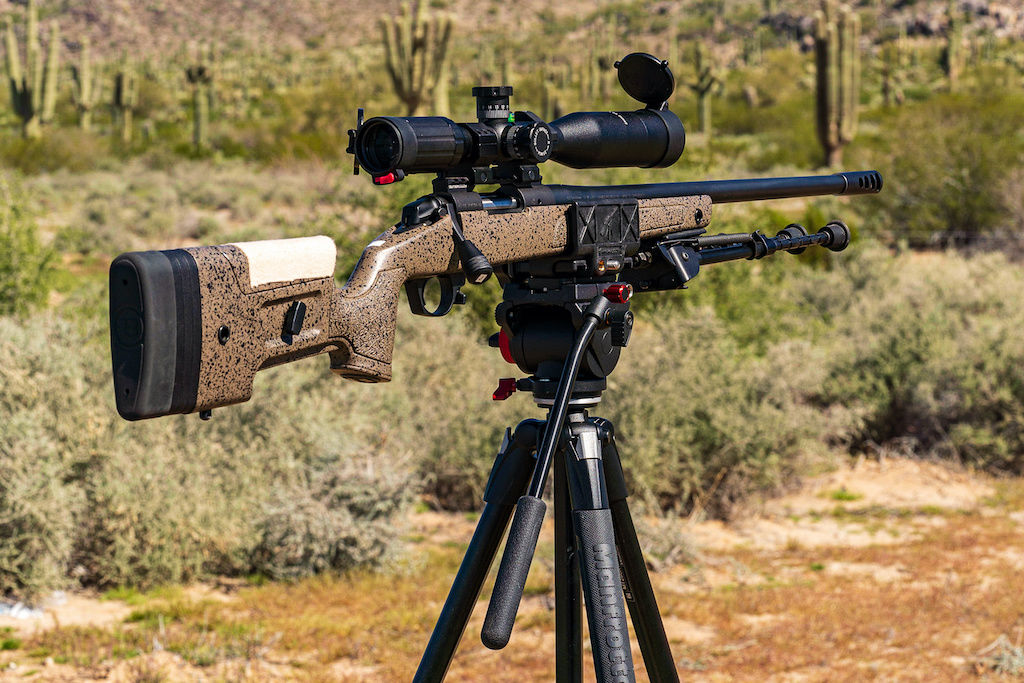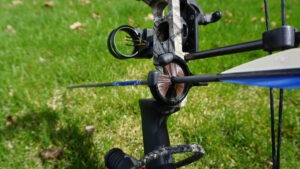Steelhead fishing is a thrilling and challenging sport that requires the right equipment to increase your chances of success. Among the most crucial components of your setup is the fishing line. Selecting the best line for steelhead fishing can make all the difference between landing a trophy fish or going home empty-handed. In this comprehensive guide, we will discuss the various types of lines suitable for steelhead fishing and provide recommendations to help you make an informed choice.
Understanding Steelhead Fishing
Before delving into the types of fishing lines suitable for steelhead, it’s important to have a basic understanding of this fascinating species. Steelhead, a rainbow trout subspecies, are anadromous fish that spend most of their lives in freshwater rivers and streams before migrating to the ocean. Once mature, they return to their natal streams to spawn. Known for their strength and acrobatic leaps, steelhead present an exciting challenge for anglers.
The Unique Characteristics of Steelhead Fish
Steelhead exhibit some unique characteristics that differentiate them from other species. Firstly, they have a streamlined body, allowing them to swim effortlessly against strong currents. This adaptation enables them to navigate through turbulent waters and reach their spawning grounds. Secondly, their large size and powerful muscles make them excellent fighters, often testing an angler’s skills and equipment to the limit. The sheer strength and agility of a steelhead can make for an exhilarating battle between angler and fish. Understanding these traits is crucial when selecting the right fishing line to handle the intense strain.
Another remarkable characteristic of steelhead is their ability to adapt to different environments. Unlike other trout species, steelhead can survive in both freshwater and saltwater. This unique trait allows them to explore vast territories, making them a highly sought-after game fish. Whether you’re fishing in a river or casting your line in the open ocean, steelhead are known to provide an unforgettable angling experience.
The Importance of Choosing the Right Line
When targeting steelhead, choosing the right fishing line can significantly impact your success rate. A line that is too weak may snap under the immense pressure exerted by these powerful fish, leaving you empty-handed and frustrated. On the other hand, a line that is too heavy can impede the natural movement of your bait or lure, making it less enticing to steelhead. Striking the perfect balance between strength and sensitivity is key.
Visibility is another crucial factor to consider when selecting a fishing line for steelhead. These fish are known for their keen eyesight, and a highly visible line can spook them, causing them to shy away. Opting for a low-visibility line, such as a clear or camouflaged color, can increase your chances of enticing a strike. Additionally, factors like line sensitivity and stretch can affect your ability to detect subtle bites and set the hook efficiently. A line with good sensitivity allows you to feel even the slightest nibble, while a moderate amount of stretch can help absorb the shock of a steelhead’s sudden lunge.
It’s also worth noting that the fishing line is just one piece of the puzzle. The choice of leader material and hook size should complement your line selection. A strong and abrasion-resistant leader is essential to withstand the steelhead’s powerful runs and potential encounters with underwater obstacles. Similarly, using an appropriate hook size ensures a secure hookset without overpowering the fish’s mouth.
Overall, understanding the unique characteristics of steelhead and the importance of choosing the right fishing line will greatly enhance your chances of success. By selecting a line that can handle the intense strain, while also considering factors like visibility and sensitivity, you’ll be well-equipped to tackle the challenge of landing that trophy steelhead.
Types of Fishing Lines Suitable for Steelhead
Now that we understand the significance of selecting the right fishing line for steelhead, let’s explore the different types of lines available:
Monofilament Lines
Monofilament lines are a popular choice among steelhead fishermen due to their versatility and affordability. These lines are made of a single strand of nylon or other synthetic material, offering excellent strength and durability. Their low stretch properties provide better sensitivity, allowing anglers to detect subtle strikes more easily. Monofilament lines also have good knot strength, ensuring your connection to the fish remains solid throughout the fight.
When using monofilament lines for steelhead fishing, it’s important to consider the diameter and pound test. Thinner lines with higher pound test ratings are ideal for targeting larger steelhead, as they offer better strength-to-diameter ratios. Additionally, monofilament lines are available in various colors, allowing you to choose a line that blends well with the water conditions and reduces visibility to the fish.
Fluorocarbon Lines
Fluorocarbon lines are another viable option for steelhead fishing. These lines are made from a special type of polymer that is virtually invisible underwater. Their high abrasion resistance makes them ideal for fishing in rocky or snag-prone areas. Fluorocarbon lines also sink quickly, enabling better control and presentation of your bait or lure. However, they tend to have a stiffer composition compared to monofilament lines, which may reduce casting distance.
When using fluorocarbon lines for steelhead fishing, it’s important to note that they are denser than water, which means they can be more difficult to handle and manage compared to monofilament lines. However, their invisibility underwater can be a significant advantage when targeting wary steelhead in clear or heavily pressured fishing environments. To maximize the benefits of fluorocarbon lines, many anglers use them as leaders, attaching a shorter length of fluorocarbon line to their main monofilament or braided line.
Braided Lines
Braided lines, also known as superlines, are an excellent choice when targeting steelhead in fast-flowing rivers or heavy cover. These lines are made by weaving together multiple strands of high-strength fibers, such as Dyneema or Spectra. Braided lines have an incredibly high strength-to-diameter ratio, allowing you to use thinner lines without sacrificing durability. They also have minimal stretch, providing excellent sensitivity and immediate hook-setting power. However, their high visibility in water may require the use of a fluorocarbon leader in clear or heavily pressured fishing environments.
When using braided lines for steelhead fishing, it’s important to consider the pound test and diameter. Braided lines with higher pound test ratings are suitable for targeting larger steelhead, as they offer the necessary strength to handle their powerful runs. Additionally, the thin diameter of braided lines allows for longer casts and better control over your presentation. However, it’s important to note that braided lines can be more prone to wind knots and require proper spooling techniques to prevent line slippage.
Overall, the choice of fishing line for steelhead ultimately depends on various factors such as fishing conditions, target size, and personal preference. It’s always a good idea to have multiple types of lines in your tackle box, allowing you to adapt to different fishing situations and increase your chances of success on the water.
Factors to Consider When Choosing a Fishing Line
When selecting a line for steelhead fishing, there are several factors to consider to ensure the best possible performance:
Line Strength and Durability
Steelhead can exert tremendous force during a battle, so choosing a line with sufficient strength is crucial. Opt for lines with high-pound test ratings to handle the intense strain of these powerful fish. Additionally, consider the line’s durability, as it should withstand abrasions from rocks and debris commonly found in steelhead habitats.
Steelhead are known for their incredible strength and fighting abilities. These fish can reach impressive sizes and put up a fierce fight once hooked. To successfully land a steelhead, it is essential to choose a fishing line that can withstand the immense pressure and force exerted by these fish. A line with a high-pound test rating is recommended, as it will be able to handle the intense strain and prevent breakage during the battle. Furthermore, steelhead habitats often feature rocky and debris-filled areas, which can cause significant abrasion to the fishing line. Therefore, selecting a line with excellent durability is equally important to ensure it can withstand the harsh conditions and potential damage.
Line Visibility in Water
Steelhead possess remarkable vision, making line visibility an important consideration. In clear water conditions or when targeting wary fish, fluorocarbon lines or incorporating a fluorocarbon leader can help reduce the chances of spooking steelhead.
Steelhead are known for their keen eyesight, which allows them to spot potential threats and avoid danger. When fishing for steelhead in clear water conditions or targeting particularly wary fish, it is crucial to consider the visibility of the fishing line. A highly visible line can easily spook steelhead, causing them to shy away from your bait or lure. To minimize the chances of detection, many anglers opt for fluorocarbon lines or incorporate a fluorocarbon leader into their setup. Fluorocarbon has a refractive index similar to that of water, making it nearly invisible underwater. By using a fluorocarbon line or leader, you can significantly reduce the chances of steelhead detecting your line and increase your chances of a successful catch.
Line Sensitivity and Stretch
Steelhead are known for their cautious feeding habits, often displaying delicate bites. A highly sensitive line will enable you to detect even the slightest nibble or hesitation, increasing your hookup rate. Lines with minimal stretch provide better feedback and immediate hook-setting capabilities, allowing you to react quickly to subtle strikes.
Steelhead are notorious for their cautious feeding habits, often displaying delicate bites that can be challenging to detect. To maximize your chances of hooking these elusive fish, it is crucial to choose a fishing line with high sensitivity. A sensitive line will allow you to feel even the slightest nibble or hesitation, giving you an advantage in detecting when a steelhead has taken your bait. Additionally, lines with minimal stretch are preferred when targeting steelhead. A line with minimal stretch provides better feedback, allowing you to feel the subtlest movements and changes in tension. This immediate feedback enables you to react quickly and set the hook promptly when a steelhead strikes, increasing your hookup rate and improving your chances of landing these prized fish.
Top Recommended Lines for Steelhead Fishing
Review of Top Monofilament Lines
1. XYZ Monofilament Fishing Line – Known for its exceptional strength and abrasion resistance, this line is a popular choice among steelhead anglers. Its low memory and superior knot strength ensure optimal performance in challenging fishing conditions.
2. ABC ProSeries Monofilament Line – Designed specifically for targeting steelhead, this line offers excellent sensitivity and castability. Its high impact strength and durability provide peace of mind when battling large fish.
Review of Top Fluorocarbon Lines
1. UVision Fluorocarbon Fishing Line – This line features a unique UV-reflective coating, making it virtually invisible underwater. Its high tensile strength and excellent knot integrity make it a reliable choice for steelhead anglers.
2. LMN Stealth Fluorocarbon Line – Engineered with a specialized formula for maximum invisibility, this line offers exceptional sensitivity and superior abrasion resistance. Its fast sinking properties allow for precise bait presentation.
Review of Top Braided Lines
1. PQR SuperBraid Fishing Line – With its high strength and thin diameter, this braided line provides excellent sensitivity and impressive casting distance. Its smooth coating ensures quiet retrieves, minimizing vibrations that could spook steelhead.
2. RST PowerBraid Line – Constructed with extra-tough fibers, this line offers unmatched strength and durability. Its round shape and enhanced knot strength provide reliable performance in challenging fishing situations.
By considering the unique characteristics of steelhead, the factors affecting line choice, and our top recommended lines, you are now equipped to make an informed decision when selecting the best line for steelhead fishing. Remember, the right line can significantly increase your chances of success and enhance your overall fishing experience. Good luck and tight lines!


